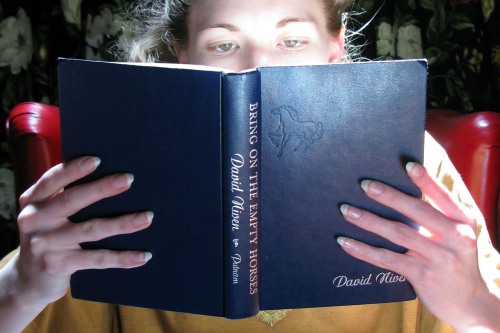The Slaves of Solitude written by Patrick Hamilton in 1947 was first on my list of must read titles from Mr. Baxter. He chose this book for me to read first because my final assignment in his class used the setting of the 40s and attempted to highlight the abrasive relationships of catty women. I say “attempted” because though the story represented my best efforts at the time, it can certainly be improved upon now. (Cover redesign by me. ©2011)
(Cover redesign by me. ©2011)
Hamilton’s Slaves of Solitude is a quiet, subtle account of the life of an ordinary middle-aged woman taking refuge from the London Blitz in a small-town boarding house. Readers view all the happenings and events through the eyes of this woman, ironically named Miss Roach. The boarding house (called The Rosamund Tea Rooms even now, though tea has long since ceased to be served to passersby) hosts a plethora of fascinating characters including Miss Roach’s bitter nemesis: Mr. Thwaites. The story painstakingly reveals the torturous and verbally abusive relationship Miss Roach suffers with Mr. Thwaites.
Thames Lockdon had been “heaven”, then, with its dark, still nights, over which the sirens occasionally came yelling triumphantly forth, only to be gradually snubbed by the profound silence of the firmament, undisturbed even by the distant sound of guns and bombs, which followed. And she had been made a fuss of, then, a sort of heroine indeed, and given a fortnight’s holiday. And the town was “pretty”, and the food “very good”, and the people “very nice” – even Mr. Thwaites had seemed “very nice”.
But now, after more than a year of it, Mr. Thwaites was president in hell.
{page 8}
Miss Roach interacts with a “foreign woman” who causes her trouble, falls in love with a bumbling American solider and finds unlikely friends amongst the residents. Whenever I try to explain it to people I know, I fear that it comes off as depressing. It does have sad moments, but overall the story is much too fascinating to make you sad. It’s the kind of story that slowly reels you in with each gloriously worded paragraph, so much so that you don’t even realize how engaged you are until you try to take a break. What impresses me most about The Slaves of Solitude is the skillful sentence structure. Hamilton gleefully weaves the longest sentences ever to confront an unsuspecting reader, but in such a way that you plow straight through without being aware of the length until the end.
Though obscurely aware of this, his naïvety and freshness of belief remained unabated. Also, having the treacherous faculty, at certain intervals, of being able to hit the ball squarely off the middle of the club-head four or five times in succession, Mr. Prest would exhibit the curious caution (the caution of a madman) of packing up his clubs and going home only when such an interval had just occurred and remained unmarred by disaster, and thus enable himself during the rest of the day to embrace the pleasant belief that he had at last alighted upon the simple explanation of golf which had by the merest chance eluded him for so many years.
{page 81}
I read The Slaves of Solitude just a few months before moving into an apartment house myself. I like to think it prepared me a little for the adjustment. One of my favorite passages (which I cannot find now for the life of me) talks of homebody residents waiting for the wayfaring travelers to return at the end of each day. The simple gesture conveys a connection of camaraderie between the boarders despite their differences and idiosyncrasies. Now that I’m an apartment dweller myself, I unconsciously check off each of my neighbors as they return home from work at night. It’s comforting to know that everyone has made it back safely.










